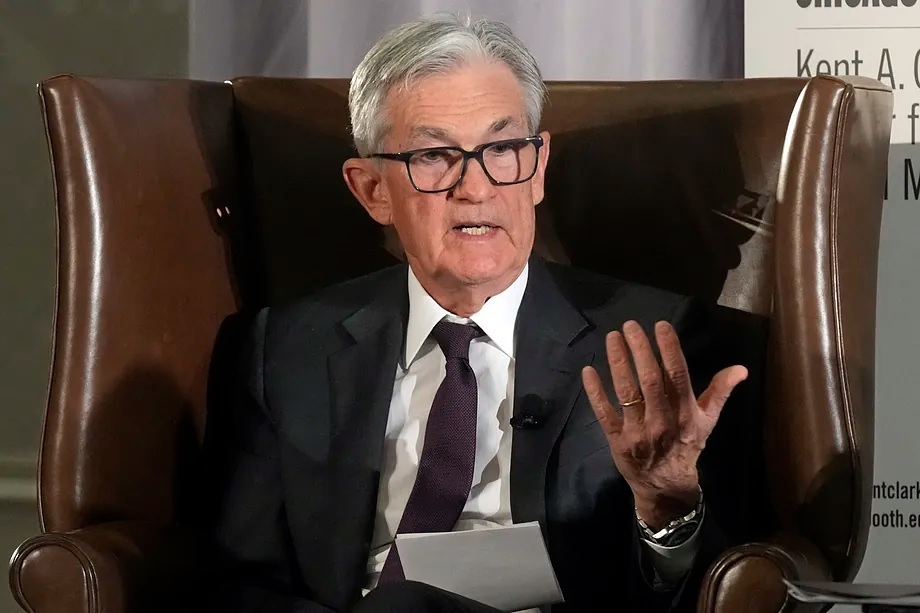The American Federal Reserve has met all expectations on Wednesday by keeping interest rates in the range of 4.25-4.50%. No change. But what the market, analysts, and the White House were eagerly awaiting was the update on its macroeconomic forecasts, after all the uncertainty generated by the erratic trade policy of the new administration, the implementation of numerous tariffs, and the imminent application of "reciprocal" tariffs with the entire world on April 2, and the stock market losses in the last month, with the destruction of trillions of dollars in value. And here is where the problems arise. "They have risen, but they are not high," said Federal Reserve Chairman Jerome Powell when asked about the possibility of a recession.
The economic projections are quite clear. Fed technicians estimate that growth will be significantly slower this year, at 1.7%, four tenths lower than what they thought in December, and they also point out that unemployment, up one tenth from 4.3% to 4.4%, and inflation (from 2.5% to 2.7%) will be slightly higher. "Uncertainty about economic prospects has increased," the statement released at noon, Washington time, states. After all the market turmoil, speculation about Trump's intentions, and global doubts, the worst thing that could happen to the U.S. economy is if talk of stagflation were to begin, with high inflation and low growth. Few things undermine confidence and investment more.
"We understand that sentiment is quite negative at the moment and that it probably has to do with the turmoil at the beginning of an administration that is making significant changes in economic policy," admitted the Fed Chairman. But emphasizing that while sentiment has fallen, economic activity has not, at least not yet.
The Federal Reserve is in a very delicate situation, not only due to the pressure and constant tension over the possibility that Trump, who has already attacked all regulators, may target the institution. Inflation is much more under control than in the last two years, at 2.5% in January compared to 5.5% in 2023, but there was an uptick at the beginning of the year, and protectionist trade policies are expected to also have an effect on prices. On the other hand, doubts about the economy's performance have multiplied. Jobs data remains positive, but not as much as in previous quarters. And the shock policy being implemented by the Government, with tens of thousands of layoffs or the closure of agencies and organizations, in addition to the attempt to freeze the disbursement of tens of billions of dollars allocated by Congress, will inevitably have a contractive effect on GDP.
The decision to keep interest rates, as expected from the Bank of England tomorrow and unlike the European Central Bank, may suggest that everything is the same as last year, as the institution still anticipates one or two rate cuts this year. "Probably over the next six months, I would expect the Fed to remain cautious and not do much," said none other than Eric Rosengren, former president of the Boston Fed, not long ago.
In its last quarterly review in December, it had already pointed to two cuts in 2025, presumably 0.25 points each. But in September, just before the elections and doubts, it estimated up to four possible total cuts, a whole point, to bring rates below 4%. But although there is no quantitative news compared to December. What changes is the background. The result may seem the same, one thing is to continue easing because the data is positive, for example with inflation gradually decreasing, or because they are negative, as would be the case of a contraction or even a recession that generates instability. In the latter part of 2024, it seemed that the theory supported the first scenario, but the trade war and the fact that large companies, in retail, electronics, car manufacturers, etc., are facing significant revenue and profit cuts, rather push towards the second scenario.
"In considering the scope and timing of additional adjustments to the target range for the federal funds rate, the Committee will carefully assess incoming data, the evolution of outlooks, and the balance of risks," the statement says. This, in U.S. colloquial language, is known as "wait and see," wait and see. Expecting two cuts, but without blind commitments due to the changing reality.
Confidence indicators, for both businesses and households, have fallen in the last month and a half due to this uncertainty. Trump's team is sending the message that what is happening on Wall Street is simply a correction, and that the economy may be going through a series of bumps, but more like a withdrawal symptom from the "public spending detox" they claim to be implementing. But, they promise, it will be brief and the final result will be worth it.
In Trump's first term, the Federal Reserve, with Janet Yellen at the helm, lowered interest rates very early to boost growth, but it was possible because inflation was much lower at that time. Now, as Powell has implicitly acknowledged, everything is much more difficult, starting with the fact that even if they wanted to react, the Government constantly changes its mind, especially regarding tariffs, making it almost impossible to maneuver and anticipate. "The Committee seeks to achieve maximum employment and inflation of 2% in the long term. Uncertainty about economic prospects has increased. The Committee is attentive to risks on both sides of its dual mandate," today's concise statement says.
Trump maintains that tariffs do not cause inflation at all, but in today's press conference, Powell clearly spoke of "the arrival of tariff-induced inflation" and blamed the uncertainty on the policies of the new administration, but was very careful not to use names. Tariffs, he concluded, "could delay progress in the fight against inflation."
